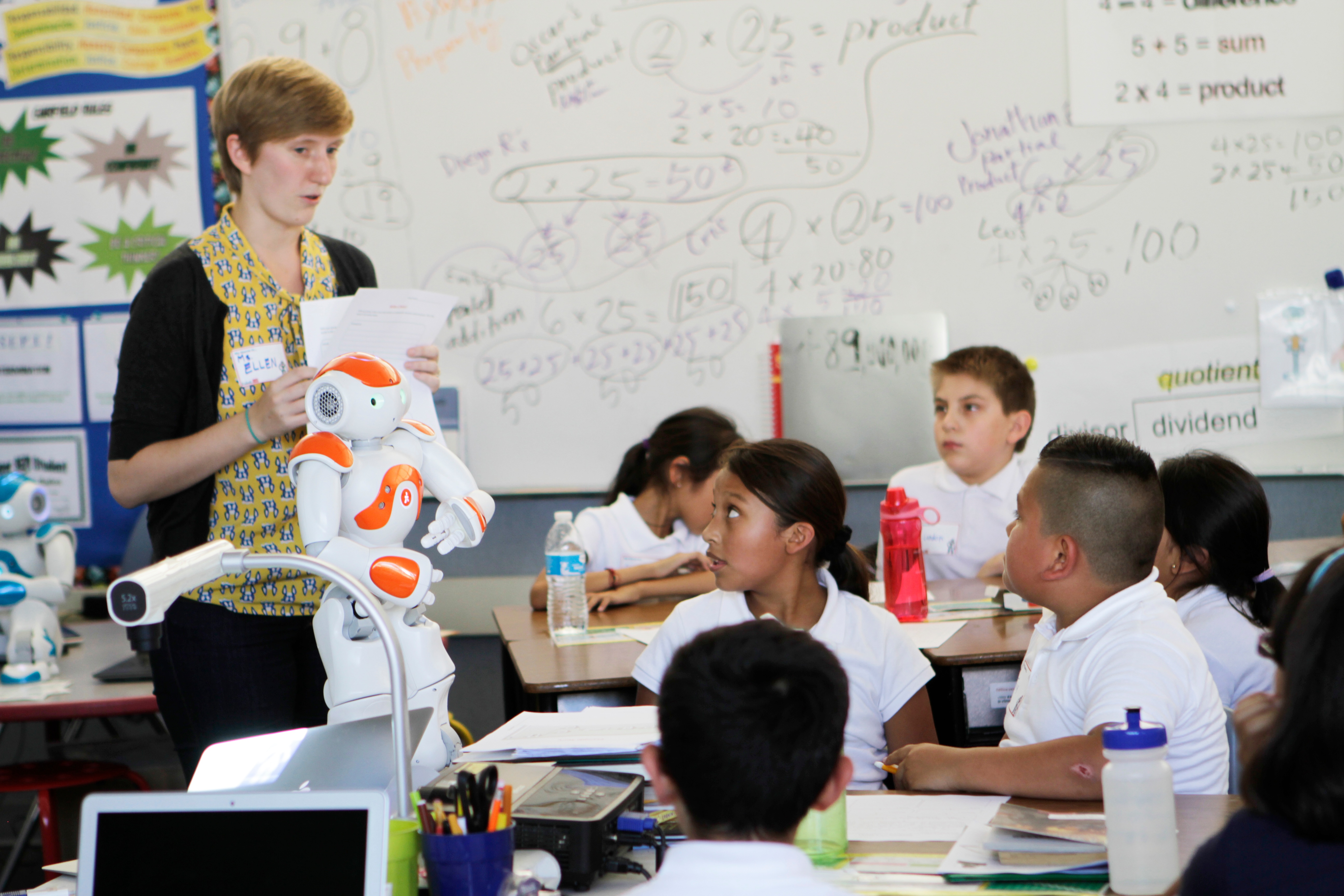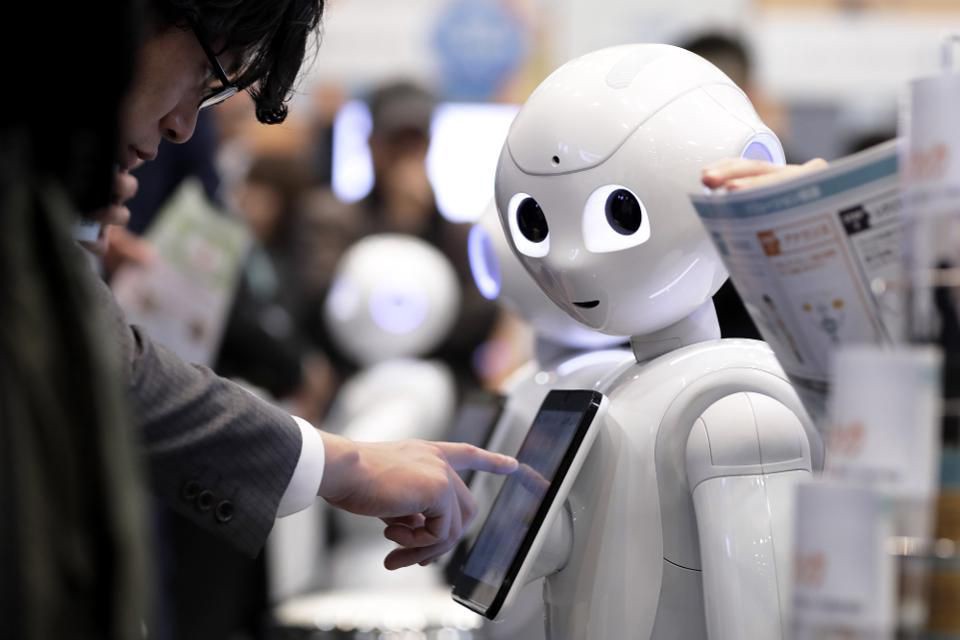By Gregory Chapman

Finding robots in the modern workplace and around the household is common. It assists humans with different tasks. The continuous growth of robotics technology, adaptability, and adoption in the modern world, will make more jobs easier.
Artificial intelligence-powered robots are already used for manufacturing, internet search engines, military combat, and rescue missions. They are taking a lot of human jobs lost to the pandemic at an alarming rate and will take more.
One sector that has largely not felt the threat of robots replacing humans is education. But there is a growing use of robots in educating kindergarten and elementary students. The question is, "When should teachers start feeling threatened by robotics in education"?
This article will take a cursory look at the pros and cons of robotics in education. And also how robots can make teachers' jobs easier.
Use of Robots In Education
A survey of K-12 teachers suggests that many educators are against robots replacing teachers' functions.
Over 84 percent of the teachers surveyed did not think the student's learning process would improve if AI-powered robots are introduced as classroom assistants.
Over 90 percent also disagreed that the performance of poor students will improve if AI robots replaced teachers.
To think machines will be better educators than the worst of human teachers seems like a utopian ideology for the majority of these teachers. However, there are some success stories of robots deployed to assist/replace teachers in the classroom.
China
Hundreds of kindergarten classes in the country now use a small robot named KeeKo. Keeko tells stories, plays games with the kids, and can even solve some maths questions.
The robots were adopted to assist teachers and have been largely well-received by the young students. Standing at 60 centimeters on a tiny wheel with a large screen that serves as its face, KeeKo's design is adorable.
When a kid answers a question correctly or completes a challenge, KeeKo will flash its heart-shaped eyes at the student.
South Korea
A large-scale project aimed at robotizing teaching in the city of Daegu, saw the introduction of robot teachers in elementary schools. Time magazine selected the English-Teaching robots (EngKey) as one of the best inventions of 2010.
EngKey is a telepresence robot that is controlled remotely by a native English Speaker. The teacher's face is projected on the screen, so students know the face of their tutor.
EngKey fills the shortage of native English teachers in S/Korea, checks the students' mood, takes attendance, and dances.
Finland
A social teaching robot called Elias is used for maths and language learning. Most students in the city of Tampere have embraced technology.
Elias, like EngKey is programmed to exemplify how having fun is an important element for effective learning. Elias sings and dances and also encourages students to sing and dance.
Elias can speak and understand 23 different languages. It also provides feedback to teachers on each student's progress, which helps teachers stay better informed to make appropriate adjustments.
There are a handful of success stories like these three all over the world. One question that has teachers and even parents worried is:
Will Robot Teachers Replace Human Ones?
No. The most likely scenario is that robots will complement the effort of teachers.
Robots can stand in for teachers when a student needs a one-on-one session and find new ways to engage students.
Jacqueline M. Kory a past member of MIT's Personal Robots Group, says, "Teachers, tutors, parents, and other caregivers are irreplaceable. Despite all the research that seems to point to the conclusion robots can be like people, there are also studies showing that children learn more from human tutors than from robot tutors."
She states that the foreseen role of robots and other similar technologies is complementary as they are new tools for education. Robots can provide novel activities and new ways of reaching young children.
Let us look at some of the supposed disadvantages of introducing robotics in education.
Cons Of Robotics In Education
- Cost of acquiring AI-powered robots. A single KeeKo robot costs more than 15 hundred dollars. There are not a lot of schools that can afford to purchase these robots. Except there is government intervention or subsidy, it will take a while before many schools can integrate robotics in the classroom.
- Emotional Intelligence. Robots are emotionless, thus will not help students get over depressive states or improve their mood. Human teachers' emotional intelligence will help them spot a distressed child and think out ways to assist them.
- Robots are unable to develop innovative ideas to teach a subject in a new way. Robots are also unable to provide valuable comments, feedback or criticism of their students' papers. They are programmed to spit knowledge and expect the students to spit the knowledge back at them.
- Computers cannot build a relationship with students. Most of the teachers adults remember are those that were sources of inspiration to them. After spotting their potential, they guided and challenged them to strive towards reaching it. Teachers that help students learn about the world around them and themselves are role models and mentors. Something a robot can not be.
- Data Privacy. This is a red flag that goes up at the mention of AI in classrooms. The fear is that children will share personal information with robots they trust, and that information can get into the wrong hands.
How Robots Can Help Teachers
With the continuous growth of artificial intelligence and robotics technology, educators have many advantages. Introducing robot assistants in the classroom can help teachers save more time to provide a comprehensive, rewarding and empathetic educational experience.
A recent paper by Rose Luckin suggests that AI robots can act as the perfect assistant to a human teacher in the classroom. The robot assistant can take charge of taking pupil's attendance and grading.
AI can also help teachers generate new lessons by going through online teaching resources to find lesson plans that will resonate with the students based on their details and the school's curriculum.
AI will greatly reduce the workload of teachers, making them less stressed.
Educational expert Sir Anthony Seldon believes in the next ten years; robots will have the ability to read the facial expression of kids and maybe their brains. He believes this will help teachers understand how well the student's learning is going.
In Conclusion
In edweek's survey of K-12 teachers, 44 percent of teachers agree that robots will do a better job than them in areas like taking attendance, making copies and other administrative tasks. Another 30 percent believes robots will help them grade faster.
Although robotics in education is still a relatively new concept, it is quickly gaining traction. In the nearest future, humans and robots will work hand in hand in classroom teaching.
Discover more about robots with RobotLAB

Author's bio
Gregory is passionate about researching new technologies in both mobile, web and WordPress. Also, he works on Top Writing Reviews and All Top Reviews the best writing services reviews. Gregory in love with stories and facts, so Gregory always tries to get the best of both worlds.
